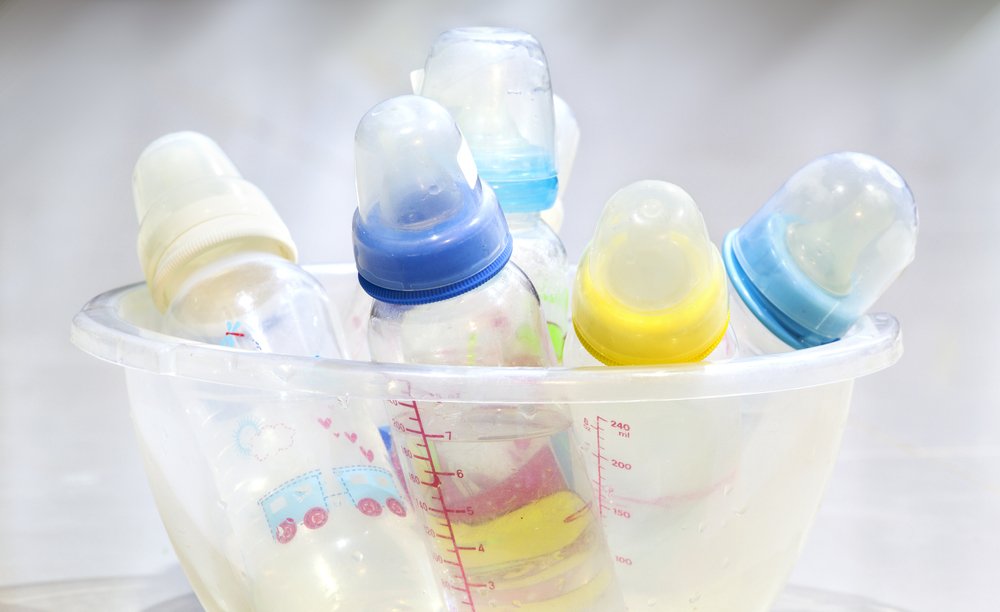Key Points:
- Despite a baby’s developing immune system, sterilizing baby bottles is still important for hygiene purposes.
- The World Health Organization recommends sterilizing all baby’s bottles and accessories before each use, the American Academy of Pediatrics suggests boiling them for five minutes.
- Before sterilizing baby bottles, it is important to wash hands and all equipment thoroughly.
- Different sterilization methods include electrical sterilization, microwave sterilization, sterilization solution for cold water, and boiling. Each method has its instructions and should be followed carefully for safety and efficacy.
Your baby’s rapid growth and development have enabled them to strengthen their immune system by acquiring new defenses along the way. However, it is still very important to sterilize baby bottles.
If hygiene is not accounted for during the preparation of a bottle, sterilization becomes pointless. The World Health Organization (WHO) recommends sterilizing all baby’s bottles and accessories before each use. These include both bottles and bottle nipples. Furthermore, the American Academy of Pediatrics (AAP) suggests boiling them for five minutes if you do not use other sterilizing methods.
How to sterilize baby bottles and sterilization methods
In any case, before you sterilize baby bottles, make sure to follow these steps.
- Always wash your hands with water and soap.
- Wash the work surfaces with hot soapy water too.
- Wash the feeding bottle and nipple with a clean bottle brush and rinse all the equipment with water.
It is important to repeat these steps each time you clean your baby’s bottles and other feeding equipment.
There are different ways you can sterilize baby bottles and each of them has its instructions. There is no “right” option, you can use the one you feel more comfortable with. Sterilization methods include:
Electrical sterilization
- Follow instructions on the sterilizer (they vary).
- Make sure your baby’s bottles are safe to steam.
- Place the bottle upside down in the sterilizer.
- Cover the sterilizer, turn it on, and leave it until it finishes and it cools down.
- Most of these sterilizers keep bottles sterile for 6 hours but remember to check the specific indications on them.
Microwave sterilization
- You can put the bottles in the microwave or a microwave steamer.
- Make sure to separate all parts of the bottle before putting it in the microwave.
- If you placed the bottles alone in the microwave, it takes 90 seconds to sterilize. If they’re inside the steamer it takes 3-8 minutes.
- Remember not to introduce anything containing metal in the microwave.
- Be careful when removing it because it will be very hot.
- If you keep a lid on the steamer, the bottles will last about 3 hours sterilized.
- If you did not use a steamer, try to use the bottle right after sterilizing it.
Sterilization solution for cold water
- Follow the instructions on the label. Usually, you have to prepare a special container with cold water and dissolve the solution there.
- Leave the bottles in the container for at least 30 minutes. Cover and ensure that everything is underwater.
- Leave the bottles in the solution until you use them. When you are ready to use one, rinse it with sterile water.
- You need to change the solution every 24 hours.
Sterilize baby bottles by boiling
- This method requires great caution to prevent injuries.
- Before sterilizing, make sure that the bottles can be boiled.
- Prepare a pot with water and get it to boil.
- Insert the bottles in the pot, ensuring that there are no air bubbles so they’re all underwater. Cover it and lower the temperature. Leave the equipment for at least 10 minutes in the water.
- Things tend to get damaged faster with this method, remember to check them constantly .
- It is preferable to take out the bottle just before you are going to use it.
- If you are not using it immediately, seal the bottles with their lids to prevent contamination.








One Response
Now I know who the brainy one is, I’ll keep loikong for your posts.